Top 10 Favorite Planets in the Solar System
Ever wondered which celestial bodies rank as favorites in our cosmic neighborhood? Ever wanted to lend your voice to a stellar poll that makes your opinion matter just as much as a seasoned astronaut's? Well, now's your chance! This is an invitation to you to weigh in on the favorite planets in the solar system.Now, this isn't a scientific journal where we're crunching data about the atmosphere or comparing the sizes of planetary bodies. This is a public forum where anyone with a passion for the planets can vote on their top picks. You're free to have your preferences. Maybe you're in awe of Saturn's stunning rings, or perhaps you're enchanted by the mystery of far-off Neptune. Or is it the familiarity and life-sustaining beauty of our very own Earth that makes it a winner for you?

I like Earth because if it didn't exist, we wouldn't exist. And it's the only known planet to support life.
We all love Earth! It is our home planet, one of everyone's favourite planets!
If you love Earth so much, why don't we all just go there? Oh, wait...
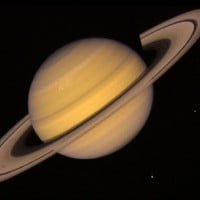 Saturn is the 6th planet from the Sun, it is the second-largest and has the most moons. One year on Saturn is 29 Earth years (10,756 Earth days). Saturn is known for its rings. Saturn is a gas giant, so there is no solid surface on the planet. It is also almost 1 billion miles away from the Sun. The... read more
Saturn is the 6th planet from the Sun, it is the second-largest and has the most moons. One year on Saturn is 29 Earth years (10,756 Earth days). Saturn is known for its rings. Saturn is a gas giant, so there is no solid surface on the planet. It is also almost 1 billion miles away from the Sun. The... read more I really like this planet! It's so cool when you think about it. It has so many rings around it! And every year, it looks like one ring just disappears!
Saturn is so cool if you think about it. It's got billions of little pieces of rock and ice circling around it. I wish I lived there.
Wow! Look at Saturn with the rings! So beautiful and spectacularly amazing rings!
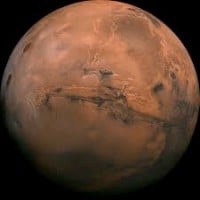
Mars should be the home planet. It is a red planet, it is a sand planet, it is a cold planet, it is an awesome planet. If I were you, I would pack my stuff and go to Mars right now!
Take a look at the lawman, beating up the wrong guy. Oh man, wonder if he'll ever know, he's in the best selling show. Is there life on Maa-a-ars?
I love Mars! It could be habitable, and it would be great to make a colony there, although the weather would be an issue.
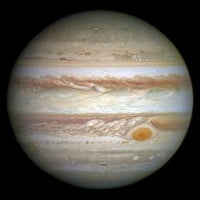
People don't know how much of an asset Jupiter is to Earth. Its powerful atmosphere can suck up objects heading towards our planet.
I don't understand why this isn't higher on the list. It protects us. We wouldn't be alive without it.
Whoa! Jupiter is so big! That is, 1300 Earths could fit inside! And it's 11 Earths wide!

Neptune is the coolest planet of all time. It has six sets of rings. Also, in like millions of years later, Triton will collide and become brighter rings for Neptune. Neptune will be called the blue Saturn. It has water ice clouds just like Earth. Also, it rains diamonds. I like Neptune.
This planet is the most beautiful celestial object in the solar system. It is the farthest planet from the sun and has so much mystery surrounding it.
Neptune is so lonely. I felt an urge to comment on it so that it could feel loved. Don't worry, Neptune, I care.
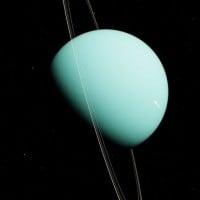 Uranus is the seventh planet from the Sun in our solar system. It was discovered by William Herschel in 1781, making it the first planet to be discovered with a telescope. Unique among the planets, Uranus has an axial tilt of about 98 degrees, causing it to rotate on its side. Composed mainly of hydrogen,... read more
Uranus is the seventh planet from the Sun in our solar system. It was discovered by William Herschel in 1781, making it the first planet to be discovered with a telescope. Unique among the planets, Uranus has an axial tilt of about 98 degrees, causing it to rotate on its side. Composed mainly of hydrogen,... read more So underrated. It is a beautiful ice gas giant with a blue-green color and has two sets of pretty rings. It rotates backwards like Venus and on its side like a rolling ball in its orbit around the sun. A less stunning fact but still interesting is that its upper atmosphere's clouds are rich in hydrogen sulfide, which makes it smell like rotten eggs and farts, fitting for its name, right? It is the third largest planet in our solar system and has 27 known moons.
My favourite planet, I love the fact that it's sideways. The rings are awesome and the lovely (like Neptune) colour. Hate all the jokes about its name, I never found them funny, just immature.
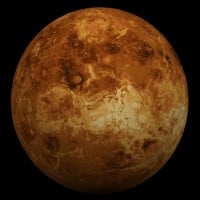 Venus is the second planet from the Sun and the closest planetary neighbor to Earth. Known for its bright appearance in the sky, Venus is sometimes referred to as the "Evening Star" or the "Morning Star." The planet has a thick atmosphere primarily composed of carbon dioxide, leading to a greenhouse... read more
Venus is the second planet from the Sun and the closest planetary neighbor to Earth. Known for its bright appearance in the sky, Venus is sometimes referred to as the "Evening Star" or the "Morning Star." The planet has a thick atmosphere primarily composed of carbon dioxide, leading to a greenhouse... read more Interesting fact: a comet struck Venus and reversed its rotation. Which is why the sun rises in the west and sets in the east.
The atmosphere on Venus will crush you if you don't die from the heat or lack of oxygen first. Venus is the hottest planet, hotter than Mars, and its atmosphere crushes the strongest things in a few hours. It's Earth where global warming went crazy. Plus, nothing can live there.
Hot lava planet, like a hot oven with a lot of volcanoes. Brightest and is one of the stars of our sky.
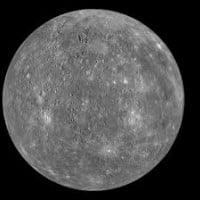
You have to burn your eyes to even catch a glimpse of it skyrocketing by and if that isn't true to name then the ancients were insane for nothing.
It is basically a hot steaming ball of rock that whizzes around our star every 88 Earth days.
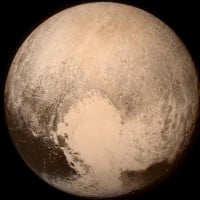
My dream would be to sit down on Pluto's surface, watch Charon orbit around, and stargaze into the heavens! Away from everyone else.
It's also the scariest planet. It makes weird sounds and is even creepier to look at.
Pluto is a dwarf planet, not a planet.
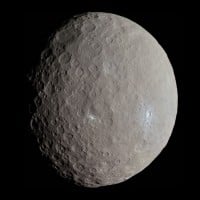
Ceres is the only inner dwarf planet, the only spherical asteroid, the first dwarf planet, and the largest asteroid in the asteroid belt.
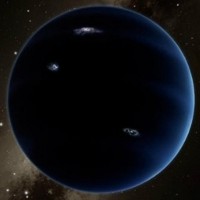
It just seems so beautiful and mysterious.
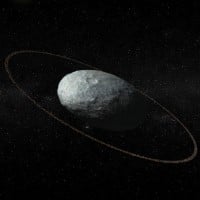
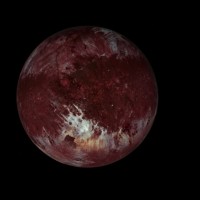
This is such a cool planet. I wish people would talk about it more.
I can talk about it more. Even though these people don't know this planet, it is so cool!
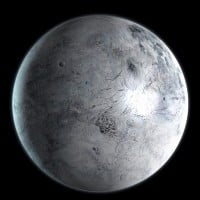 Eris is a dwarf planet located in the scattered disk, a region of the solar system beyond Neptune. It was discovered in 2005 by astronomer Mike Brown and his team, and its discovery led to a redefinition of what constitutes a planet, eventually resulting in the reclassification of Pluto as a dwarf planet... read more
Eris is a dwarf planet located in the scattered disk, a region of the solar system beyond Neptune. It was discovered in 2005 by astronomer Mike Brown and his team, and its discovery led to a redefinition of what constitutes a planet, eventually resulting in the reclassification of Pluto as a dwarf planet... read more That planet is out in the Kuiper Belt. It will take 558 years to orbit around the sun.
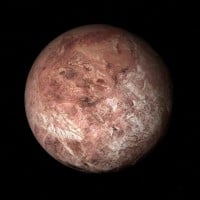
Yes, Quaoar! The distant icy dwarf, named after the creation god in Tongva mythology! Let's build a biosphere there!